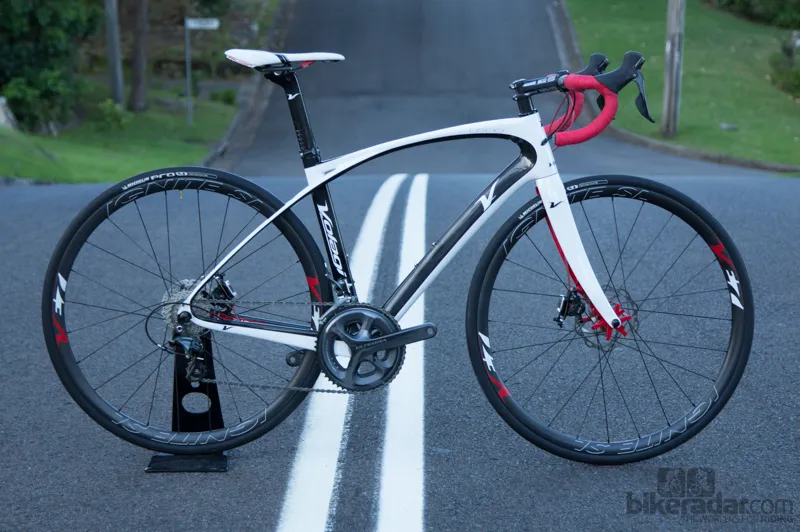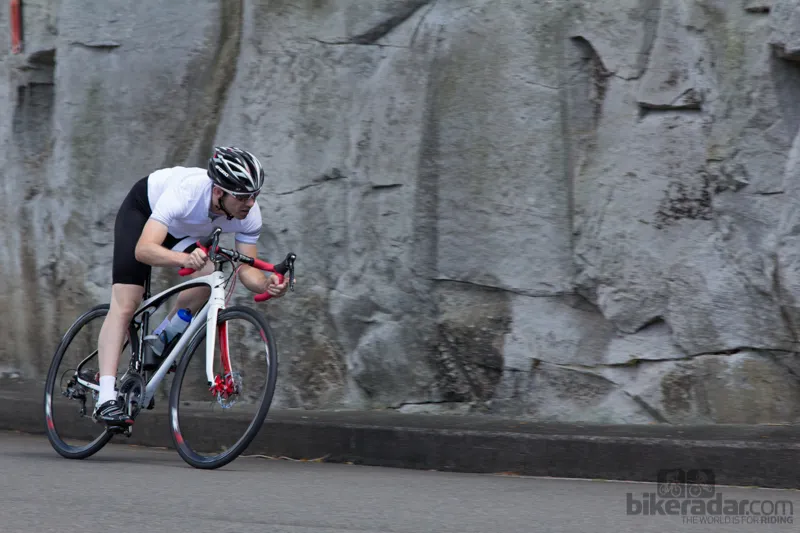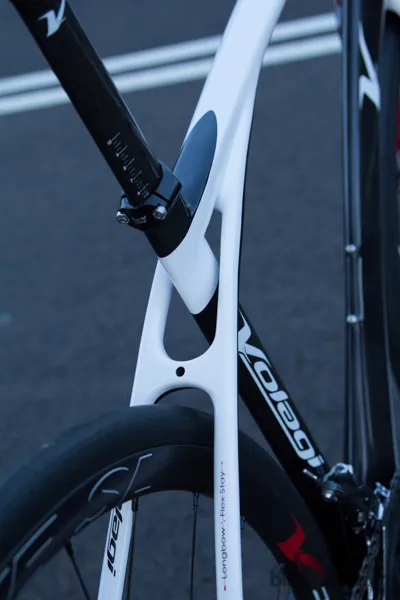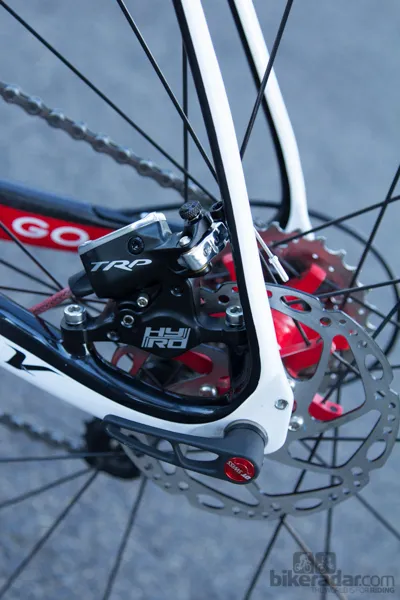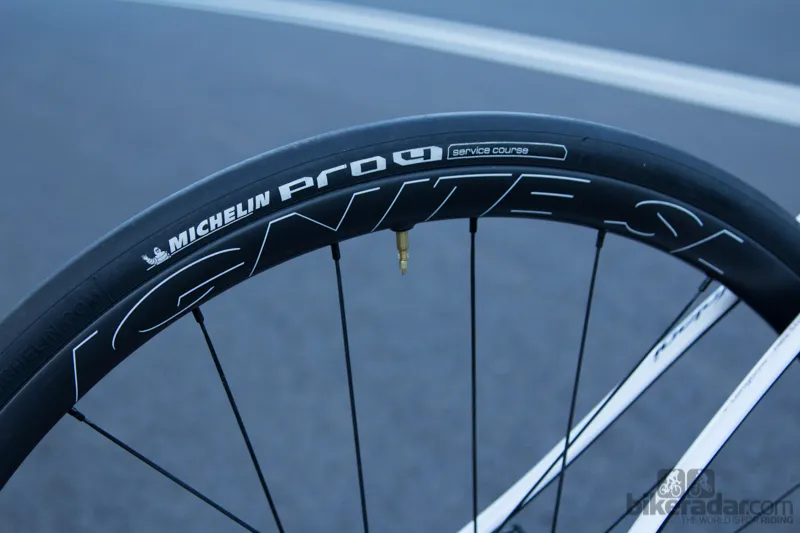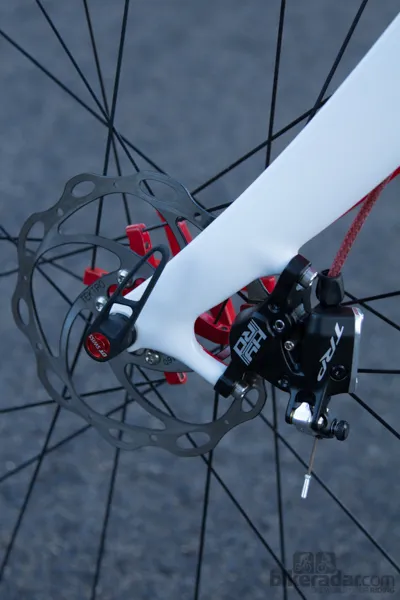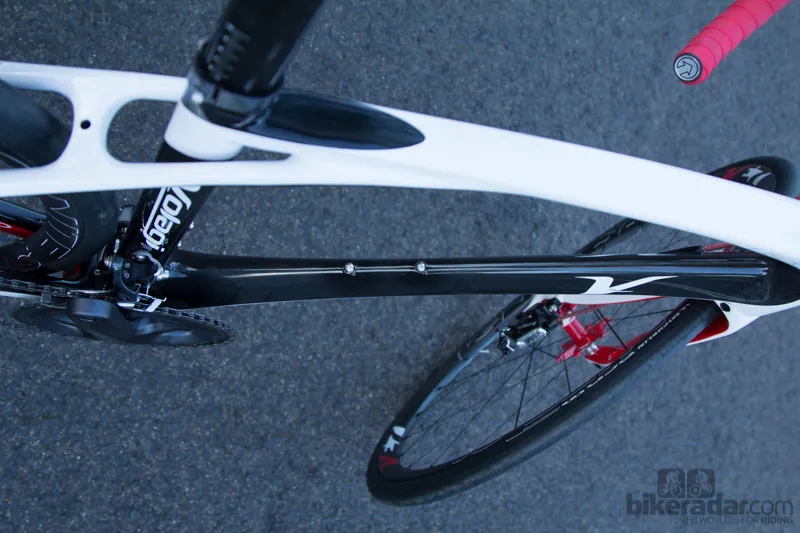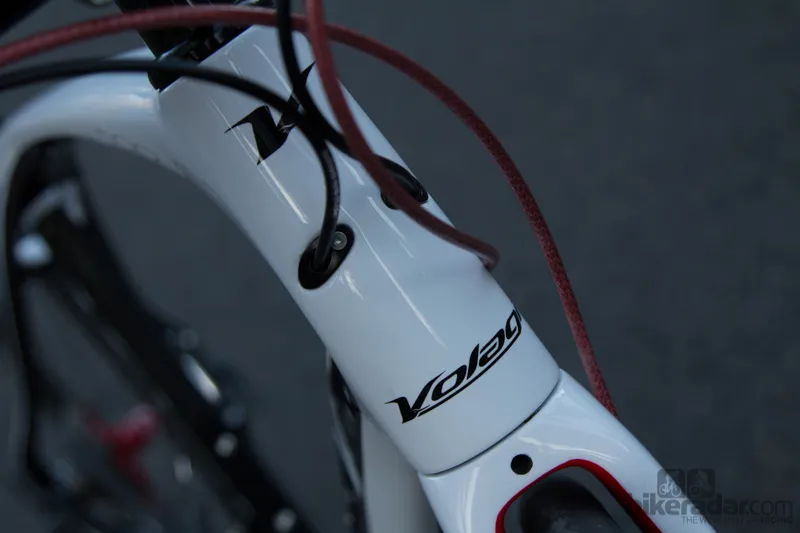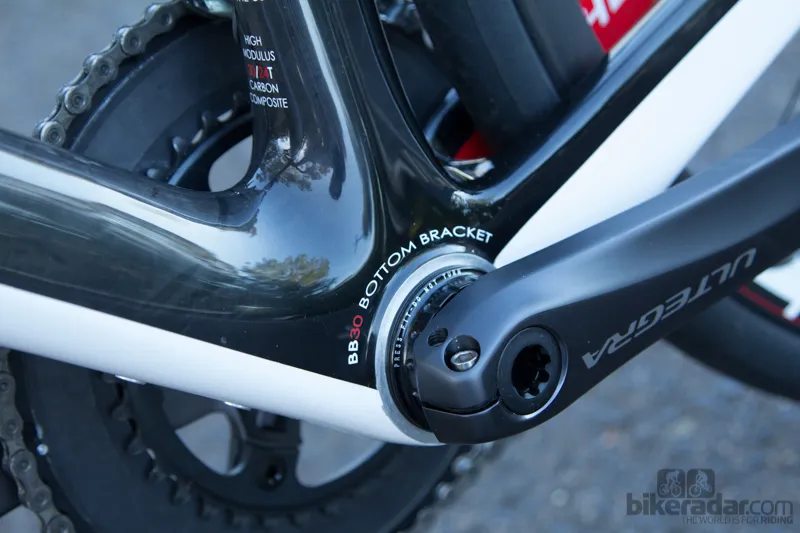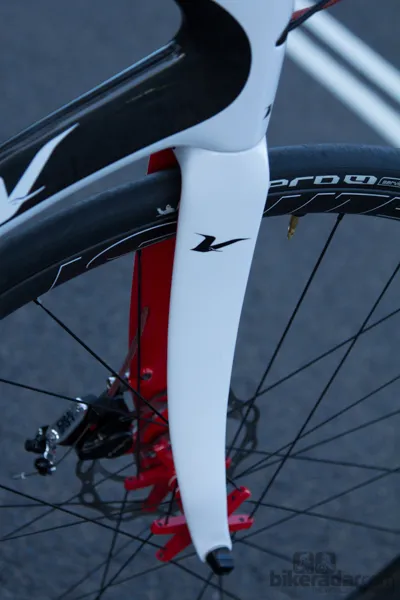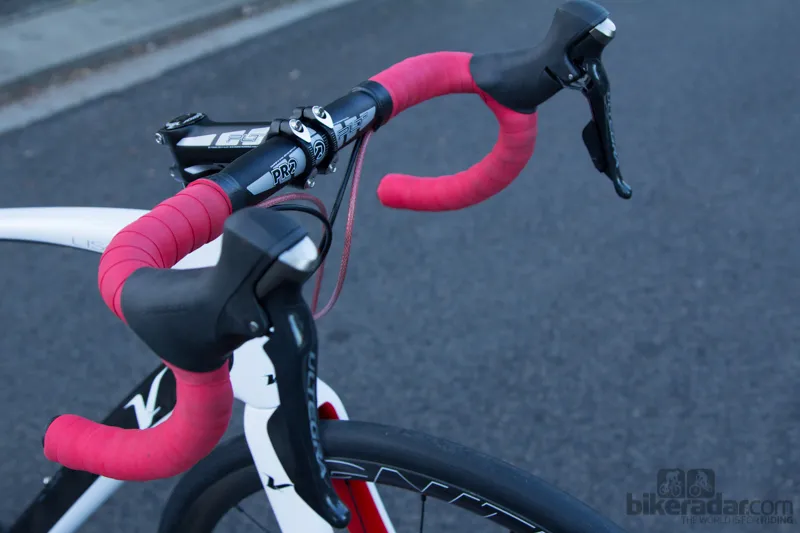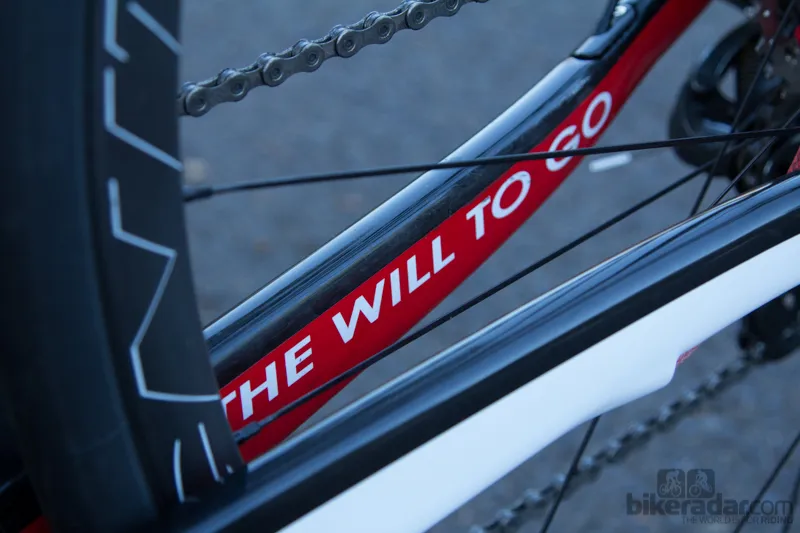The Volagi Liscio was the market's first disc brake specific performance road bike. BikeRadar tested the original Liscio back in 2011 and enjoyed the ride, but most importantly, the braking performance. Now we're in 2014, there's far more support for road discs, with hydraulic brakes and compatible lightweight wheels easily sourced.
In many ways, the Liscio2 (confusingly still called the ‘Liscio’) is the same as the original, but there are a few important improvements. The frame has moved to internal cable routing, which makes it compatible with both electronic and mechanical systems. Additionally, the rear dropouts have been widened to 135mm, a now-accepted width for disc brake equipped road bikes.
Our test bike blended functional performance and value for money. Two key highlights are the TRP HY/RD brakes and Volagi’s Ignite SL carbon clincher wheelset, which was mated to a modest Shimano Ultegra 6800 build.
Ride and handling: competitive handling with relaxed positioning
The Liscio is now faster, and this is purely due to the lighter (and more expensive) rotating mass of our build. Jumping on the pedals is met with a satisfying turn of speed, still not in the same league as a race bike, but an improvement that easily excites.
As we’d mentioned in our previous review, the Liscio loves high-speed descending and offers an incredibly stable ride. When we overshot a corner at speed, we could comfortably fix it with the easily controlled brakes, helped by the stable handling. Leaning into corners is not race-bike quick but is livelier than expected given the bike’s relaxed head angle.
Volagi's own LongBow Flex stays see the seatstays swoop past the seat tube and connect to the top tube. The idea behind this is to remove much of the impact force coming from the rear wheel and divert it into the frame, away from the rider. While it’s aesthetically pleasing, it doesn't really make a noticeable difference to ride quality.
The ride isn’t harsh by any means, but small bump compliance is lacking, with the 25c high volume rubber doing the hard work to smooth the roads surface. This isn't a bad thing, as we were expecting a disconnected sofa-like quality and in turn got a ride that took the edge off rough roads, without eliminating the feel of what the bike was doing beneath the rider.
Where the LongBow seatstay design shows itself is on larger impacts, such as potholes or imperfections in the road surface. The design definitely lessens the impact to the body on these sudden and often harsh impacts. We wouldn’t go as far to call it suspension, but it takes the sting away.
Stiffness at the front end is adequate, however the separated seat tube section is easily flexed - luckily this has little noticeable effect under power. The slender aero profile tubes are pleasing to look at but are also the reason for the ride quality and detectable flex.
At the rear of the frame it’s a different story, with tall chainstays and a large BB30 bottom bracket section providing plenty of drivetrain stiffness to give efficient forward drive.
Positioning on the bike is comfortable, with a tall head tube that lets you achieve an upright position. The frame’s sloping top tube design means much of the proprietary aero shaped seatpost is exposed, with a generous adjustment range among the six sizes on offer.
Frame and equipment: minor yet important improvements
In 2011, the Liscio was revolutionary. Since then the frame hasn’t received any major changes. The carbon layup and tube profiles remain the same, as does the geometry.
The new electronic compatible internal gear cable routing is clean and simple and comes at a perfect time to match Shimano’s new R785 Di2 Hydraulic offering. The gear cables now enter at the front of the head tube, allowing for cleaner lines and shorter housing. The internally guided brake routing in the fork and frame pose a nuisance for those using new full-hydraulic setups, meaning a forced rebleed on initial build and in case of future rebuilds.
Rear dropout spacing was a previous complaint of ours and Volagi has now moved to the industry accepted 135mm width. This greatly expands your wheel options, as road disc specific wheels and even 29er mountain bike wheels will now fit.
Our test sample was fitted with Shimano’s new semi-compact cranks, we felt the 52/36T gearing perfectly complemented the bike's versatility. It's ready for long mountain ascents with ripping speeds on the return.
The 25c Michelin tyres ballooned with the Volagi 25.55mm width rim Ignite SL wheels, providing the small bump compliance. At just over 1,400g, the carbon clinchers are a competitive option in a growing road disc market - the wheels alone cost US/AU$1,895. Wheel stiffness was fair, but we did experience occasional and minor disc rotor rubbing with hard out of the saddle efforts, which shows there is some flex at the hub shell/axle/dropout interface. Luckily rubbing of this kind is barely enough to have any effect on efficiency.
Reefing on the TRP HY/RD brakes at speed rewarded us with control and confidence that's hard to match with a full mechanical system. We experienced no sign of shudder, flex or pulsing that would signal the brake calliper and/or mounts are flexing under stress. At lower speeds, the brakes were grabby - something to be expected with the level of power on tap.
Much like our earlier review of the original Liscio, it's hard to look past the disc brakes - they're still what separates this bike from the masses and they remain confidence-inspiring, especially in poor conditions or high traffic. The biggest improvement to the Liscio is not through frame enhancements, but rather in the increased brake and wheels options.
After three years on the market, the Liscio continues to offer an admirable combination of aesthetics, performance and confidence. The non-racer boldness of this bike was early for its time and has never been more relevant than now.
Note: Depending on your location, the Liscio may not be available as a complete bike. The frameset as tested includes the fork, seatpost and headset.
Build as tested:
- Brakes: TRP HY/RD setup with Ashima compression-less housing
- Handlebar: PRO PLT 42cm
- Stem: PRO PLT 100mm
- Groupset: Shimano Ultegra 6800 11sp
- Tyres: Michelin Pro4 Service Course
- Wheels: Volagi Ignite SL
- Build price: AU$5,995
- Weight: 7.73kg (without pedals)
